“[…] It is not in the best interests of West Indies Cricket that our best players play in every global league and play for the WI Team on an optional basis. It is imperative that the Board and the players have a frank and honest discussion with each other in order to arrive at a solution to this impasse.
“[…] A constructive discussion must be had with—but not exclusively limited to—players such as Nicholas Pooran, Evin Lewis, Akeal Hosein, Odean Smith, Shimron Hetmyer, Shai Hope, Brandon King and Rovman Powell to name a few.
“[…] We hold the strong view that red ball, and in particular Test cricket against the Test Teams ranked above us, provides vital opportunities for primarily white ball players to develop their overall cricketing skills…”
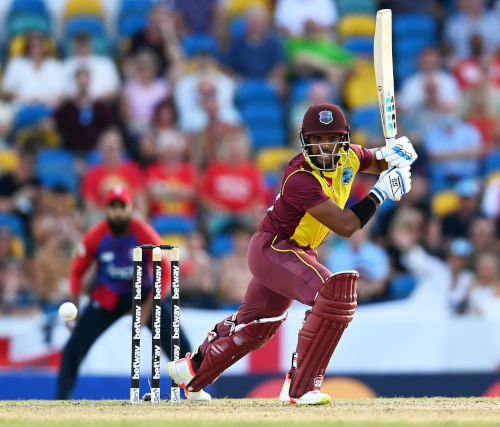
(Copyright Gareth Copley/ Getty Images)
The following is an abbreviated version of A Report on the West Indies Men’s Team’s Performance at the 2022 ICC Men’s T20 World Cup by a CWI Independent Committee (the “Group”) comprising chair Patrick Thompson Jr, Brian Lara and Mickey Arthur:
Executive Summary: Industrial disasters, to paraphrase author Malcolm Gladwell, are “often the result of a series of apparently unrelated events over time”. West Indies’ “untimely” group stage exit from the 2022 ICC tournament “bears certain similarities to a disaster, albeit one without fatal consequences”.
The squad had “little experience of topflight cricket in Australia” and “were underprepared in view of the short time between the end of the Caribbean Premier League (CPL) and the start of the World Cup”.
“[…] In the absence of a camp in Australia, the CPL had little meaningful impact on the Team’s preparation. The batting unit failed to perform to expectations and the absence of Shimron Hetmyer was a significant loss to the batting unit.”
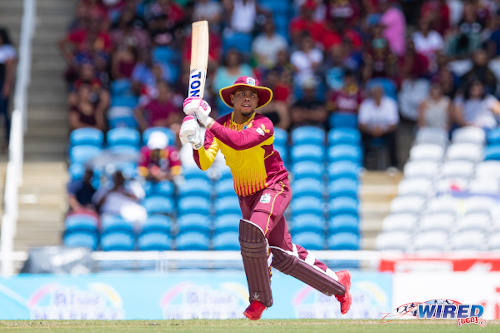
(Copyright Daniel Prentice/ Wired868)
“[…] Namibia beat Sri Lanka and Ireland beat the eventual champions England at the World Cup. This serves to underscore the volatile nature of T20 cricket. A T20 cricket match has a lot in common with a 400-meter race—there is very little room to recover from mistakes.”
West Indies were ranked 10th in the world, after the 2021 T20 World Cup. Between that period and the start of the 2022 World Cup, they played 23 T20 matches: winning seven and losing 16.
“[…] While the WI Team should have done better than they did [at the 2022 T20 World Cup], a semi-final berth would have exceeded most reasonable expectations.
“[…] Supporters of the WI Team have to temper their expectations. There is no quick or easy fix to the challenges that we face. David Rudder’s prescient words that ‘Soon we must take a side or be lost in the rubble in a divided world that don’t need islands no more’ resonate even more vividly today than when they were first penned.”
It is “not commercially viable” for our best players to choose West Indies over the proliferation of professional leagues, as it is “entirely understandable” that players seek to “maximize their earnings” in short careers. The dilemma is our talent pool is too shallow to lose our best players.
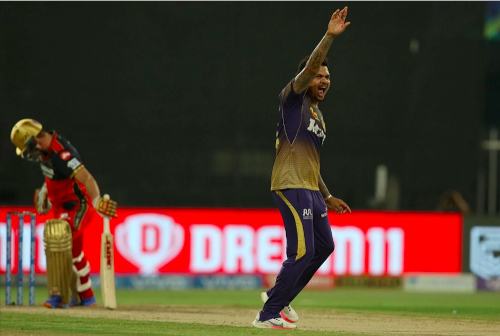
(Copyright Rahul Gulati / Sportzpics for IPL)
“[…] It is not in the best interests of West Indies Cricket that our best players play in every global league and play for the WI Team on an optional basis. It is imperative that the Board and the players have a frank and honest discussion with each other in order to arrive at a solution to this impasse.
“In this Group’s view, there is significant distrust between the players and administration and this distrust is inimical to ensuring that the best 11 players turn out for the WI Team in every match.
“No Objection Certificates cannot be weaponised against the players, but it is essential that some middle ground is arrived at. Otherwise, West Indies Cricket may cease to exist as an entity.
“This Group does not indulge in doomsday predictions but no entity, sporting or otherwise, has a viable future if its talent is not harnessed and effectively managed…”
The 2024 ICC Men’s T20 World Cup, co-hosted by West Indies and USA, “presents CWI with a golden opportunity to hit the reset button and implement a strategic plan aimed at reviving the fortunes of the WI T20 Cricket Team”.
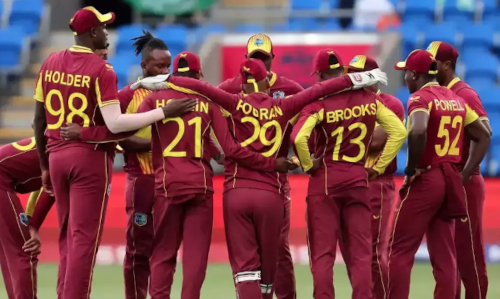
Short-term recommendations (to be implemented over the next 60-90 days)
(i) The director of cricket and selectors should urgently identify a core squad of 30-35 players that are likely to form the nucleus of the 15 players that will eventually form the 2024 World Cup Squad.
(ii) CWI should convene a 3-day in-person meeting/retreat with the afore-mentioned core squad for the purpose of determining their willingness and availability to participate in the 2024 World Cup, and in which players and administration can speak frankly and address any and all grouses (real or imagined) in a constructive manner.
The meeting should include mediator(s), the head coach, CEO, director of cricket, general counsel and corporate secretary, WIPA representative, the president and two directors (nominated by the other directors) along with the players.
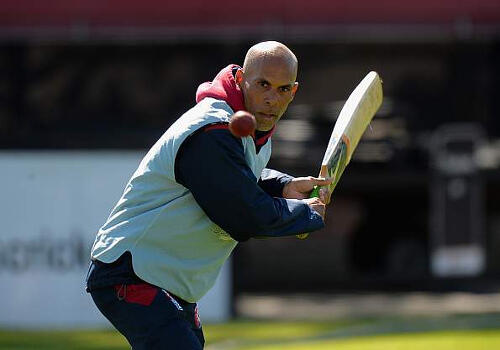
“[…] A performance consultant who can assist the players and management to define West Indies cricket culture, identity and values is essential to this process.
“It is important that this meeting is convened in a round table format as opposed to management on a raised platform and players on a lower level…”
(iii) The cricket calendar until 2024 is largely settled, “barring any unforeseen pandemic or global emergency” and players “ought to be well aware of their potential availability for the next 18 months”.
“[…] CWI and the players have to arrive at a memorandum of understanding (MOU) on player availability that recognizes the need to build a unified squad for the 2024 World Cup. Neither side will get exactly what they want but it is hoped that they can arrive at an agreement that is mutually beneficial to all stakeholders…”
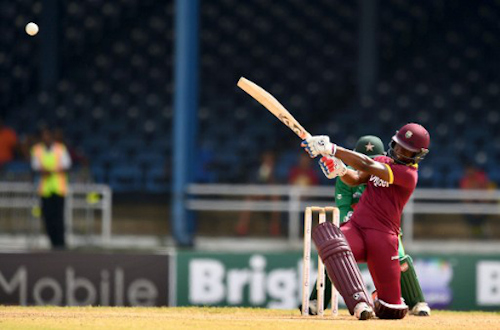
(Copyright AFP Photo/ Jewel Samad)
(iv) The meeting/retreat should produce “a clear agreement on strength and conditioning standards, player availability and needs and CWI expectations in the lead in to the 2024 World Cup”—with “significant player input”.
(v) CWI must also implore players to play “as much red ball cricket for WI as possible between now and the 2024 World Cup”.
“[…] As a part of this retreat, a constructive discussion must be had with—but not exclusively limited to—players such as Nicholas Pooran, Evin Lewis, Akeal Hosein, Odean Smith, Shimron Hetmyer, Shai Hope, Brandon King and Rovman Powell to name a few.
“Following this Group’s consultations, we hold the strong view that red ball, and in particular Test cricket against the Test Teams ranked above us, provides vital opportunities for primarily white ball players to develop their overall cricketing skills…”
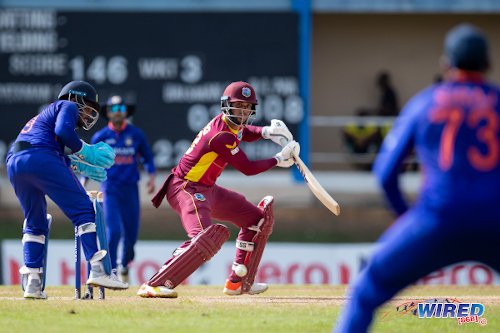
(Copyright Daniel Prentice/ Wired868)
(vi) “As a necessary corollary of the strategic retreat, all parties must clearly determine what is meant by availability for selection. In this Group’s considered view, the selectors should be encouraged, if not mandated, to always select the best 11-13 players for the WI Team in all formats.
“Once selected, the onus would then be on the players to determine whether they will make themselves available within an agreed upon timeframe.”
Medium-term Recommendations (90-180 days)
(vii) The CWI needs a MOU with Territorial Boards mandating center wicket facilities of consistent standard made available for practice by the WI Team. It is one matter that players and coaches agree upon.
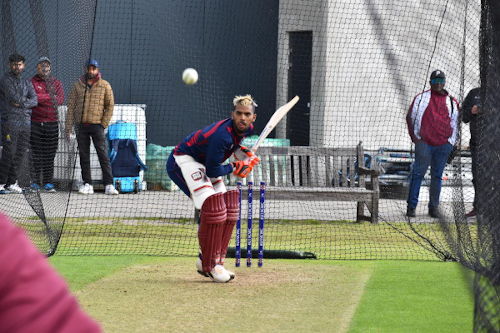
(via CWI Media)
“[…] This Group was struck by the fact that touring teams enjoy more center wicket practice than the WI Team when they tour the West Indies.
“[…] Center wicket practice is the nearest thing to simulating in-game conditions; net practice is for the purpose of fine-tuning and tweaking skills.”
(viii) The players (contracted and non-contracted) should be involved in the set-up of strength and conditioning facilities in their respective territories.
“[…] As a result of their travels, the players are exposed to gold standard strength and conditioning facilities… Moreover, it is important that the players are encouraged to buy in to what is required to enhance their performance.
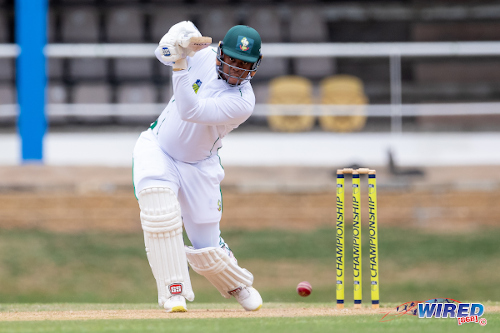
(Copyright Daniel Prentice/ Wired868)
“[…] If players are provided with what they need, they will have the best chance to attain the requisite strength and conditioning standards.”
(ix) Territorial Boards must conduct audit of strength and conditioning facilities and “then liaise with regional governments to determine which if any of the players’ needs can be met”.
The CWI Sports Science & Medicine Manager should play role in ensuring “a consistent standard on strength and conditioning facilities across all Territorial Boards at the international grounds”.
“[…] CWI can then review and determine what additional steps are required in order to bring these facilities up to par at all Territorial Boards. A weighted scoring system to assess each Territorial Board’s strength and conditioning facilities is crucial…”
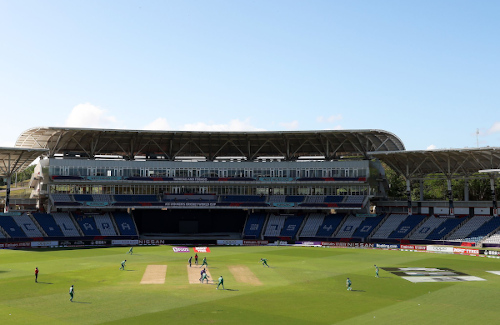
(via CWI Media)
(x) CWI should “urgently determine the best mechanism for ensuring that contracted players are complying with their respective strength and conditioning programmes”. Investment should be made in wearable technology, like Whoop or Oura, that “reports back to a central database at CWI headquarters on activity levels for all contracted players”.
“[…] There must be monitoring and supervision of players in order to ensure that they are held accountable. The current Athlete Management System (AMS) that requires players to log their activities needs to be urgently overhauled or removed.”
(xi) CWI must do “wholesale review” of player contracts and possible use template of ICC Future Tours Programme, which clearly sets out the number of international matches likely to be played, as opposed to annual contracts.
Contracts should have individual and team incentives for performance and penalties for failure to meet agreed-upon standards.
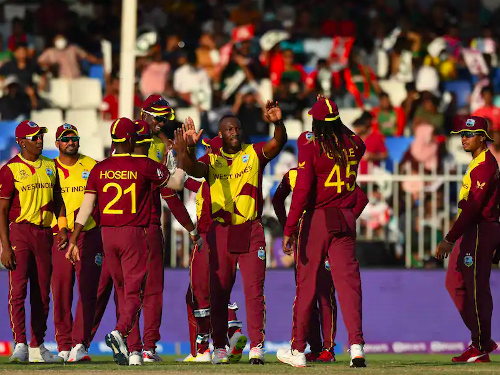
“[…] A review of their contracts must, of necessity, involve the input of the players and WIPA but an emphasis on flexibility is critical to ensuring value for money…”
(xii) “The director of cricket in conjunction with the Coaching and Player Development managers and players (their input is necessary) are to develop and implement enhanced individual player plans (“IPPs”) for all contracted players in the first instance [inclusive of] personal development, diet, nutrition, leadership, coaching and financial management, wellness, to name a few.
“Clear benchmarks and targets are essential to this process.”
(xiii) “The last workshop for regional curators was held in 2017. The upcoming 2024 World Cup presents an opportunity for all head curators at international grounds in the West Indies to meet in Antigua for a week-long workshop focused on current best practices for the preparation of pitches.
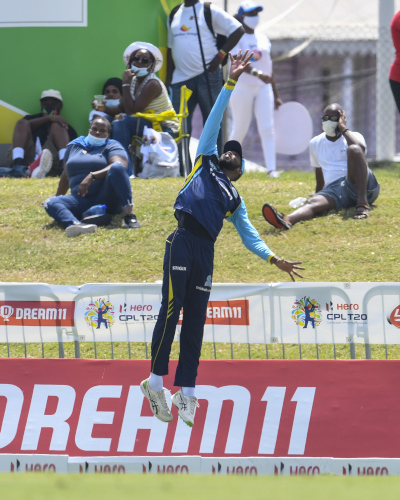
(Copyright Randy Brooks – CPL T20/Getty Images)
“An MOU between CWI and Territorial Boards confirming these best practices to ensure consistent standards and effective monitoring is critical.”
(xiv) “CWI should urgently tender for psychologists and/or psychiatrists in each of the Territories that the WI Team is scheduled to play matches in.
“Mental health support for both the players and the support staff is critical in view of the demands of the current international cricket calendar. Once CWI has indicated a short list of approved mental health professionals in each Territory players and/or management can consult with those professionals as and when necessary.
“[…] Mandatory training seminars to sensitize all contracted players and representative teams (under-15 upwards) on the benefits of mental health support is a critical aspect of exposing players to this aspect of their development.”
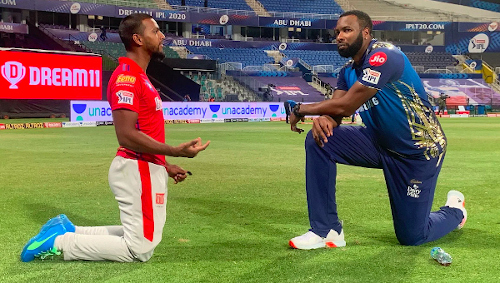
(Copyright IPL 2020)
(xv) The CWI should mandate meetings with its CEO and director of cricket and the CEOs of Territorial Boards on a monthly or quarterly basis to “facilitate and encourage greater co-operation between Territorial Boards and serve to reduce the insularity that has been the bane of West Indies cricket since its inception”.
(xvi) In order to address the “batting unit’s weaknesses against spin bowling”, a batting camp should be held in advance of India home series.
“[…] Drills and center wicket practice sessions reinforced by visual and data analysis is likely to bear fruit in the short and long terms.
“Quarterly in the first instance and then semiannual skill development camps in consultation with the players and coaches and director of cricket in order to develop and enhance the hard skills needed to play international cricket should become an established practice.”
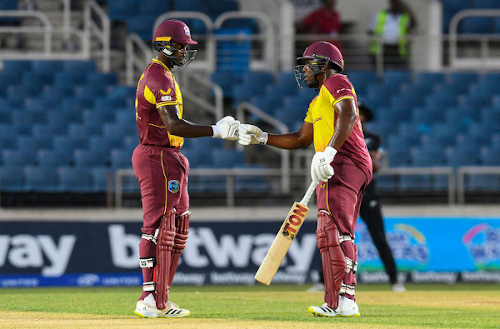
(via CWI Media)
(xvii) “A regional T20 tournament is fundamental to identify and developing players. Timing and funding are massive challenges but an annual two-week tournament hosted on a rotational basis by each Territorial Board may provide a model for success.”
Long-Term Recommendations (180-270-360 days)
(xviii) CWI, through its director of cricket, should institute a system of identifying talent scouts across all Territorial Boards [who] will have to report to CWI on any talent identified and any plans for development of that talent.
“[…] CWI cannot rely on the Territorial Boards to create such a scouting programme… The NFL has a Scouting Academy and that may be a good starting point for CWI on how to develop this.
“It is unrealistic to expect players to emerge without any serious investment in talent spotting.”
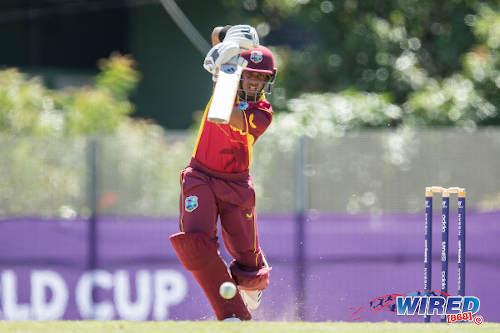
Nandu top-scored with 128 runs.
(Copyright Daniel Prentice / Wired868)
(xix) CWI, with input from players, should decide on qualities that selectors should possess and invite applicants across the West Indies at the end of the current selectors’ term of office.
“[…] A person should volunteer for the inevitable criticism that comes with being a West Indies selector and an open application process should encourage more applicants…”
(xx) CWI should create a mentorship plan for the development of its contracted players, with former players invited to indicate their interest to serve in that capacity.
“[…] There are currently 19 contracted players. Each of those players should be paired with a [compatible] former player or players in their territory who can mentor, advise and help to develop these players.
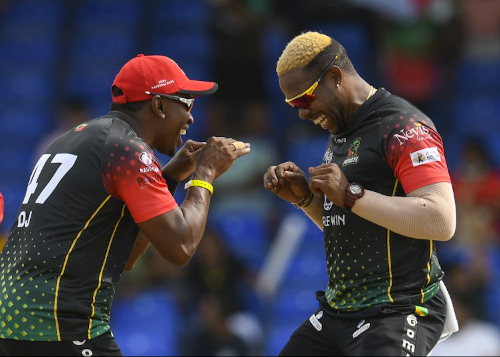
(Copyright CPL T20 Ltd 2021)
“[…] Former players represent a valuable and untapped resource. They can, under the right circumstances, make a tangible contribution to player development.
“Mentorship is an important facet of global professional development. West Indies cricket is no exception.”
(xxi) “In conjunction with the Sports Science and Medicine Manager, CWI should urgently craft a protocol to implement biomechanics and flexibility as part of CWI’s coaching programmes […] fully integrated with strength and conditioning programmes…”
(xxii) All Territorial Boards must have strength and conditioning coaches “to assist and enhance this aspect of West Indies Cricket”.
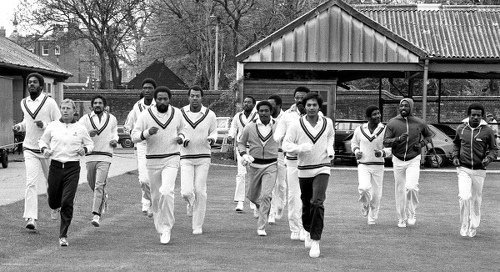
(via ESPN)
“[…] Player input on strength and conditioning standards with agreed benchmarks and testing mechanisms and standards to ensure accountability is imperative.
“The players will thus be held to a standard that they have agreed as opposed to a standard being forced upon them by CWI.”
(xxiii) “None of these reforms will amount to anything if there is no clear plan for the management and development of cricket pitches and grounds in West Indies…”
CWI must conduct audit of each international ground in the West Indies “with a view to determining what additional resources are required”.
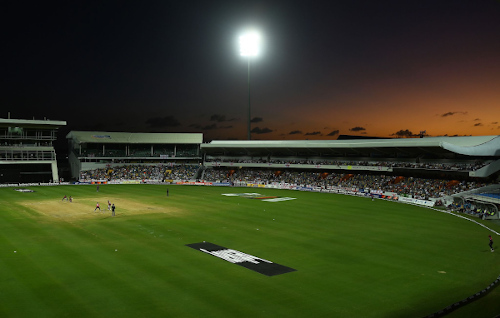
(via CWI Media)
Greater cooperation and the transfer of equipment between Territorial Boards is recommended as “maintenance equipment is not cheap and expecting cash strapped regional governments to equip all grounds is unrealistic”.
(xxiv) “Governance reform is not part of this Group’s mandate but it would be absurd not to recognize that some of these recommendations only work if there is some (perhaps not wholesale) governance reform of the kind indicated in previous reports commissioned by CWI.
“This Group does not presume to exceed its mandate but it is clear that a more symbiotic relationship between the Territorial Boards and CWI is critical if any of these suggestions are to take root.”
(xxv) The CWI should conduct annual and then biannual audits of all funds provided to Territorial Boards.
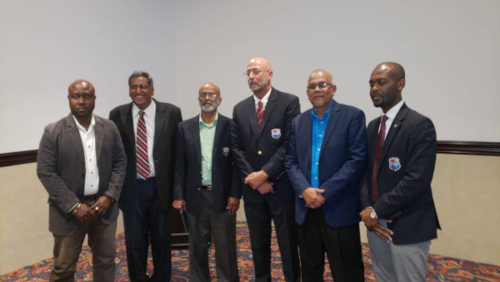
“Funding is central to these reforms… In this Group’s respectful view, the monies disbursed to the Territorial Boards should be disbursed on a quarterly basis as opposed to the current arrangement…”
(xxvi) The CWI should set “cricket development performance standards for Territorial Boards” in a MOU.
“[…] Each Territorial Board should be mandated to organize, on an annual basis, an under-15, an under-19, a 20 over, 40 over and 3-day (90 overs per day) tournament as a minimum standard.
“Benchmarks and incentives for Territorial Boards [are] critical to this process.”
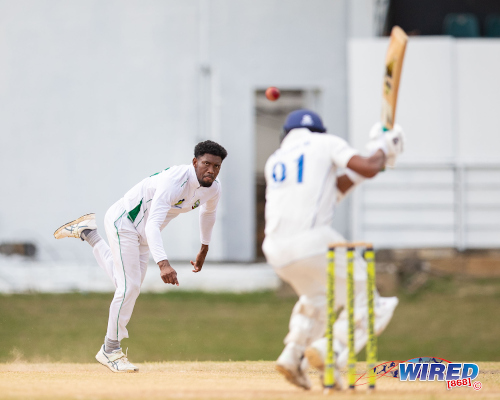
(Copyright Daniel Prentice/ Wired868)
(xxvii) “[…] CWI must be empowered to withhold or reduce funding to Territorial Boards that do not comply [with its standards]… Territorial Boards have to ensure that their national mandate serves the interests of CWI and is for the mutual benefit of all stakeholders.”
(xxviii) “Each Territorial Board should be mandated to present an annual report at CWI’s annual general meeting [with] audited financial statements should be included in these annual reports in order to ensure transparency and accountability.
“It is hoped that this process will encourage Territorial Boards to cross pollinate each other and develop regional as opposed to purely national strategies on continued best practices for the development of the game.”
(xxix) The Group considered “the issue of whether separate coaches should be appointed for red and white ball cricket”. These arguments are summarized below for further analysis and consideration:
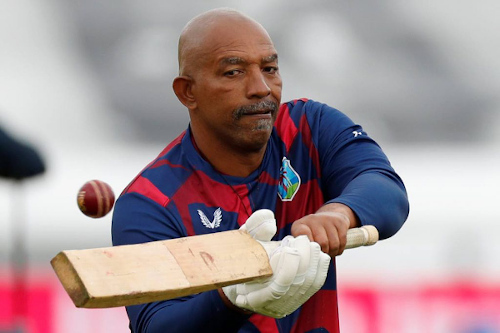
(Copyright AFP)
(xxx) “At present, West Indies […] are not scheduled to play any significant red ball cricket in the next 5 years to justify a separate red ball coach.
“All the same, [the current red ball calendar would facilitate] a red ball specific coach, who would also be a selector by virtue of this position, would be able to spend more one-on-one time with players, observe West Indies Championship games and work with the Academy players whilst strategizing with the High-Performance Unit…”
(xxxi) “CWI may find it difficult to attract a single coach to take on the responsibility of coaching red ball and white ball teams with our shallow talent pool and lack of any notable and or sustainable success against highly ranked opposition.
“It is arguable that dividing coaching responsibilities may likely make the prospect of coaching a WI Team less arduous whilst adding some flexibility to the role and expanding the pool of likely applicants.”
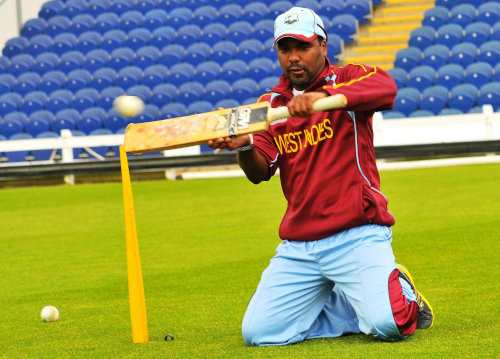
(via CWI Media)
(xxxii) “On the other hand, the best coaches in world cricket are unlikely to take on the considerable challenge of coaching the WI Team in conjunction with any other coaching responsibilities they may have.
“It is difficult to imagine a white ball exclusive WI coach who is not also involved in coaching other teams. Separate coaches will require significant collaboration and cooperation of a kind unknown to WI cricket.
“Finally, the dilemma involved in having two coaches is best articulated by the American football cliché that ‘if you have two starting quarterbacks then you don’t have one’.”
(xxxiii) “In our view, the best and most technical coaches, should be coaching our under-19 and academy sides while the best man managers and motivators should coach our senior side.
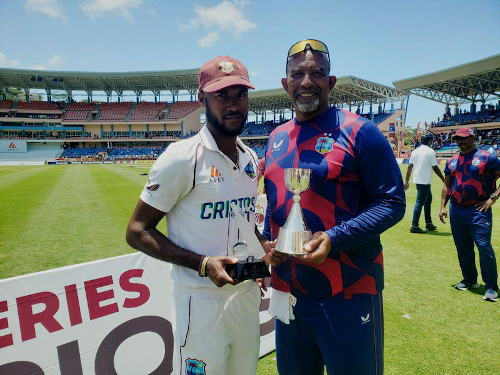
(via CWI Media)
“[…] Players have expressed the need for a hands-on coach who could recognize the individuality of players and coach them accordingly.
“Therefore, there could be no objection to seeking the formal input of the players on possible head coaches before the next head coach(es) are selected.
“For the avoidance of doubt, the players will not be choosing the coach but their input should be vital to the coach selection process.”
(xxxiv) “It may be trite but bears repetition that CWI should commit to organizing at least one A team and/or developmental tour and host one A team tour on an annual basis.
“Exposing our players to different conditions is a tried-and-true method of developing players.”
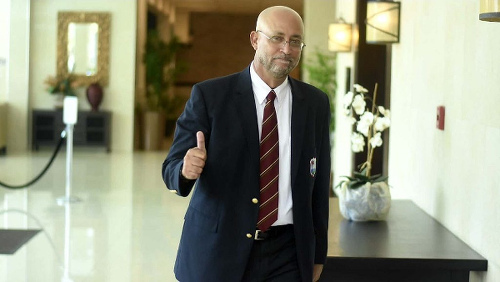
CWI president Ricky Skerritt’s response to the Independent Committee’s Report:
“The quality of this report lends itself to becoming the foundation of the learning and planning culture that we have envisaged for the sustainable improvement of all our cricket teams. It brings great promise and direction after the grave disappointment of our T20 World Cup results.
“I am extremely grateful for the panel’s commitment to lend so much of their valuable time to this important review project, including carefully interviewing more than 30 players, coaches, administrators, directors, and other stakeholders who I am told spoke so willingly and frankly to the panel.
“The independent group’s report has been circulated to CWI’s Board of Directors and I look forward to the Board agreeing to implement the 34 recommendations as soon as possible.”
|
Wired868 has provided readers with solid, independent journalism since 2012. If you appreciate our work, please contribute to our efforts. Support Independent Journalism |
 Wired868 Wired868 for smart sport news and opinion
Wired868 Wired868 for smart sport news and opinion


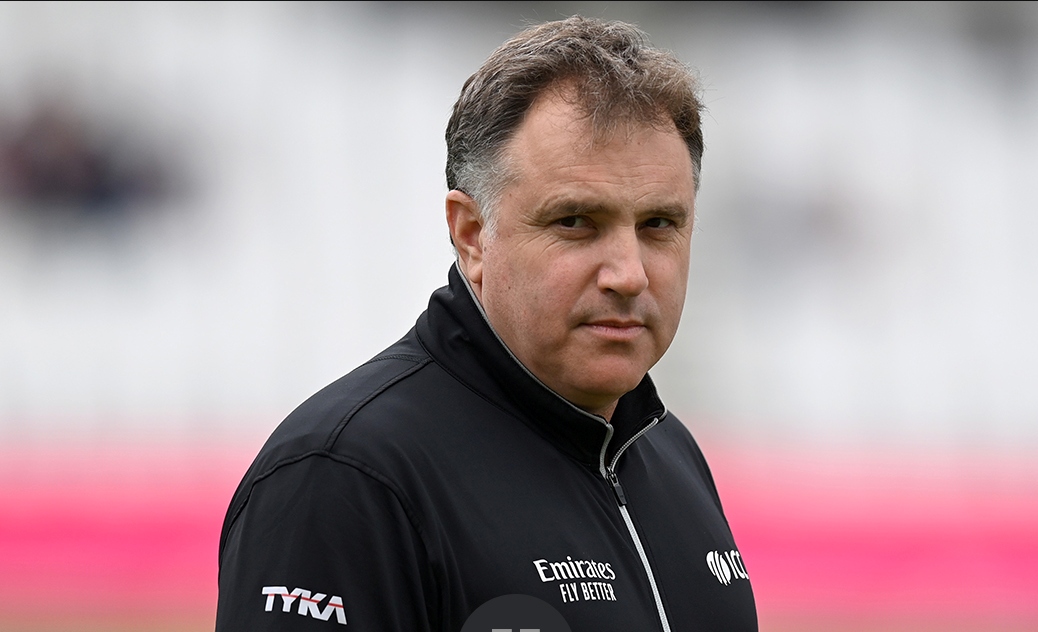
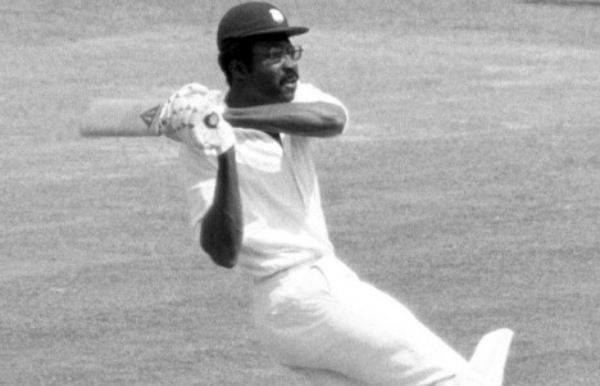
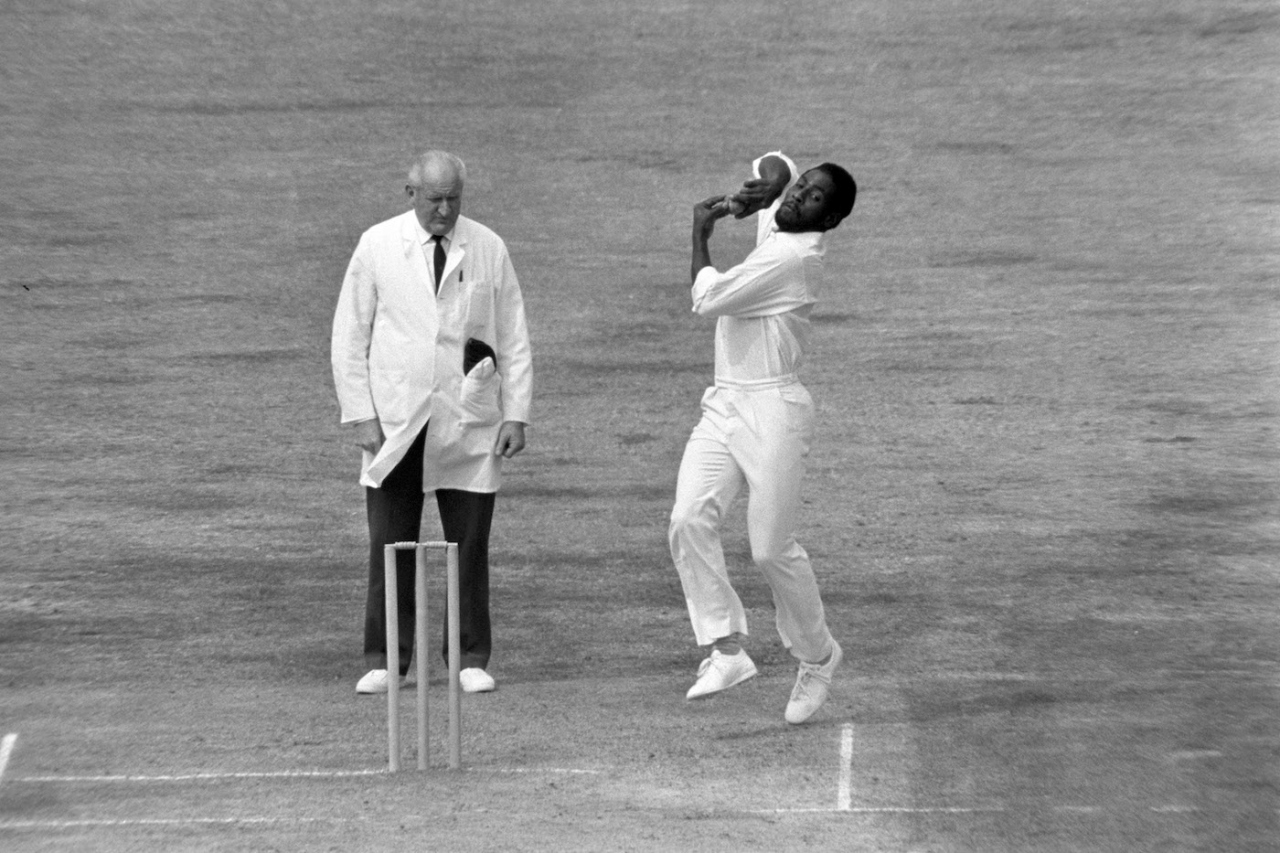
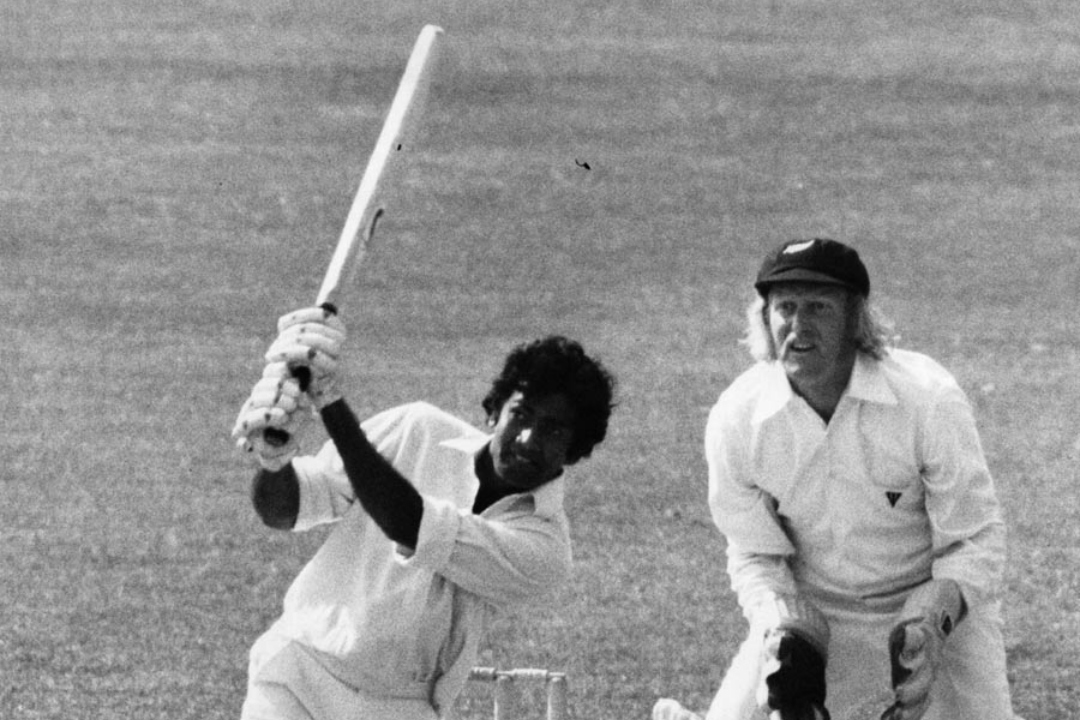
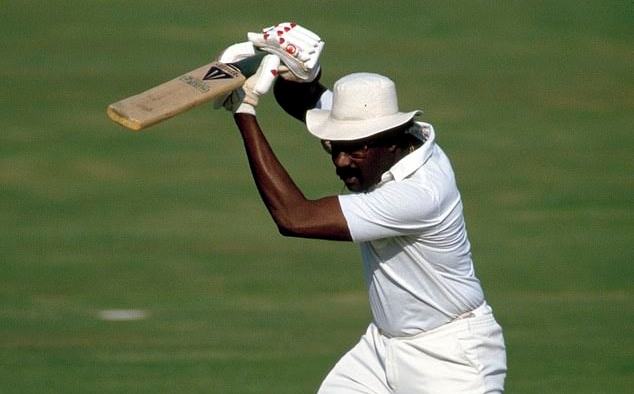
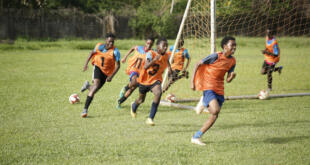
This constitutes a “report on West Indies’ exit from the 2022 T20 World Cup?
I have absolutely no difficulty imagining this document without so much as a comma changed bearing a January 2020 dateline. Who are we fooling?
We should all be disappointed in the extreme that the president did not have the testicular fortitude to point that out. I certainly am.
Thanks for sharing!